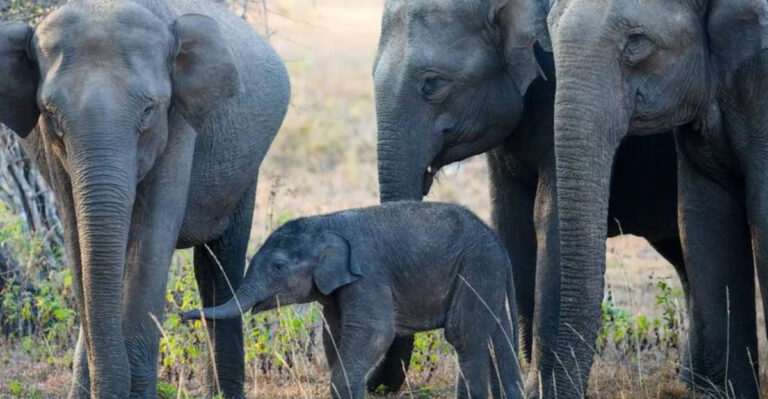12 U.S. States With The Highest Number Of Alligator Attacks (Florida, Texas, Louisiana Leading)
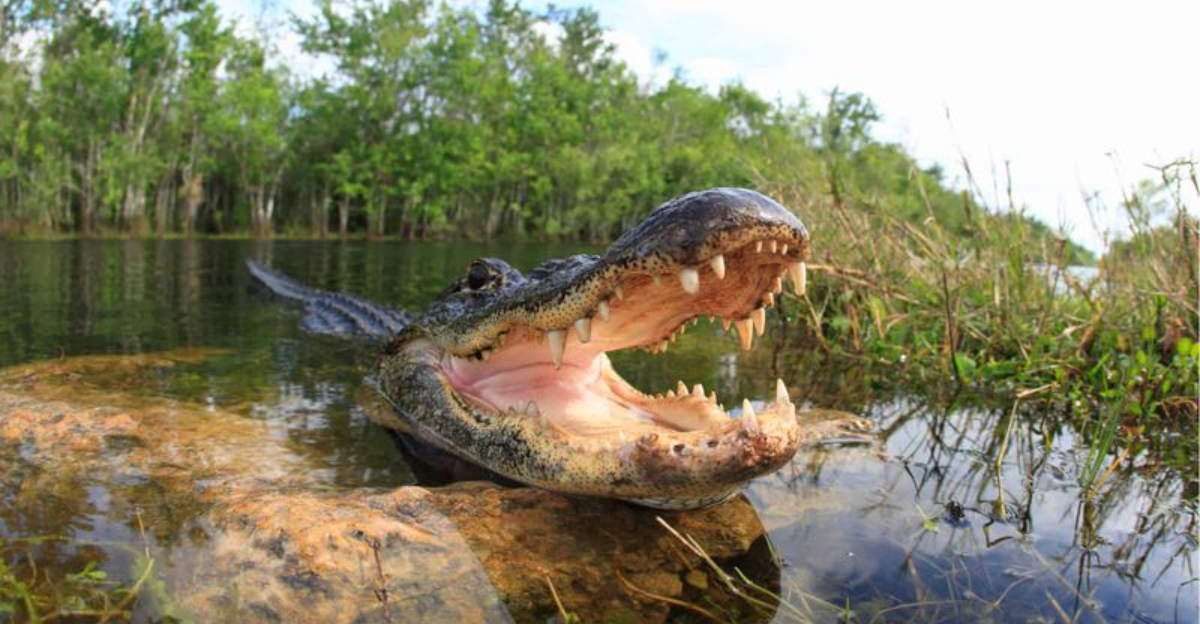
Alligators, those prehistoric-looking reptiles with powerful jaws, inhabit waterways across the southeastern United States.
While alligator attacks on humans remain relatively rare, they do happen, especially when people venture into their territory during mating season or feeding times.
Understanding which states have the highest number of these encounters can help visitors and residents alike stay safe when exploring America’s swampy southern regions.
1. Florida: The Undisputed Champion Of Gator Incidents
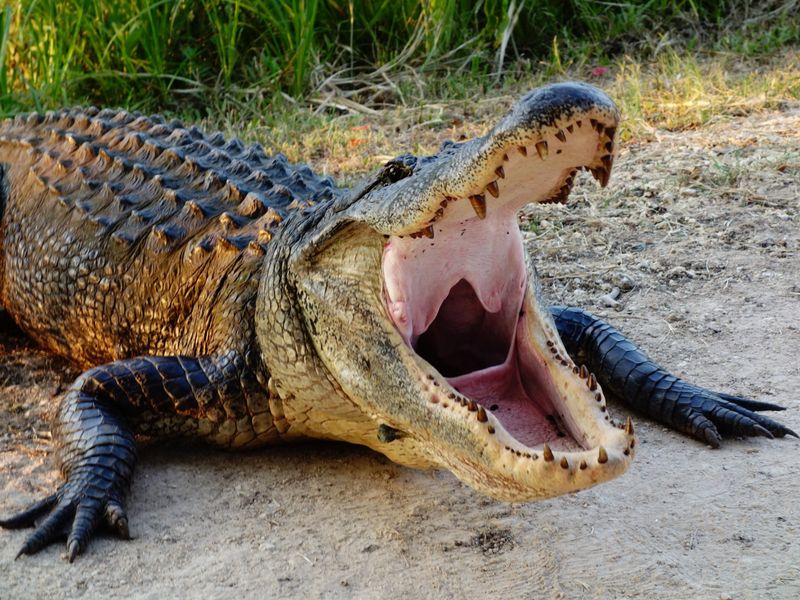
The Sunshine State tops the list with over 400 documented alligator attacks since 1948. With approximately 1.3 million alligators calling Florida home, the math simply works against humans in this watery paradise.
Warm weather year-round and extensive wetland systems create perfect conditions for alligator populations to thrive. Many attacks occur when people swim in unauthorized areas or when residents feed wild alligators – a practice that’s not only dangerous but also illegal.
Florida’s population boom has pushed human development deeper into traditional alligator habitats, creating more opportunities for dangerous encounters along canal banks, golf courses, and retention ponds.
2. Louisiana: Bayou Country’s Toothy Residents

Louisiana ranks second with its maze of swamps and bayous housing approximately 2 million alligators – the largest population in America. The state averages 1-2 serious attacks annually, primarily during summer months when alligator activity peaks.
Cajun culture has long respected these ancient reptiles, but tourism activities like swamp tours bring more humans into close proximity with gators. Commercial and recreational alligator hunting helps manage populations, but doesn’t eliminate risk.
Many Louisiana incidents involve people fishing or gathering crawfish in shallow waters where visibility is poor and alligators can approach undetected.
3. Texas: Big Gators In The Lone Star State
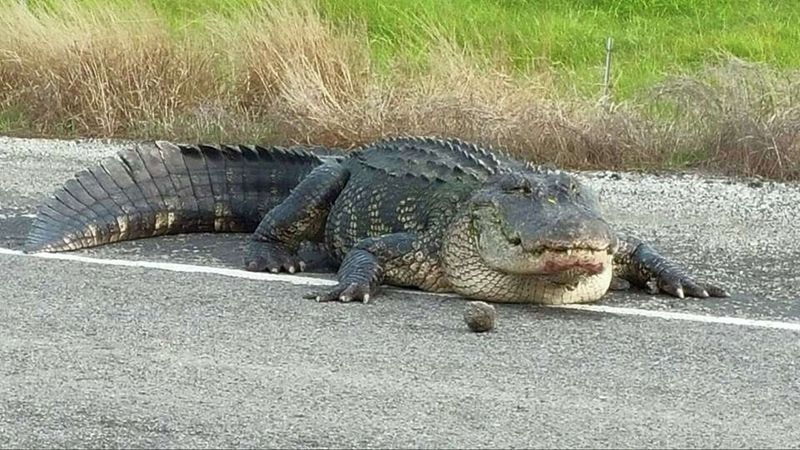
Everything’s bigger in Texas – including some of the alligators! The state has recorded dozens of attacks, concentrated in its eastern and coastal regions. Trinity River National Wildlife Refuge and Brazos Bend State Park represent hotspots for gator activity.
Texas Parks and Wildlife Department estimates approximately 500,000 alligators inhabit the state. Recent urban expansion into wetland areas has created more human-alligator conflict zones, especially around Houston suburbs.
A surprising number of Texas attacks occur in residential areas when alligators migrate between water bodies during drought conditions or mating season, sometimes ending up in swimming pools or garages.
4. Georgia: Okefenokee’s Ancient Predators

Georgia’s Okefenokee Swamp serves as alligator central in the Peach State, home to thousands of these prehistoric reptiles. The state reports fewer attacks than its southern neighbors but still ranks fourth nationally. Most Georgia incidents occur along coastal areas and southern waterways.
Barrier islands like Cumberland Island present particular risk as tourists often don’t realize they’re sharing beaches with gators who move between freshwater ponds and saltwater areas.
Recent suburban development around Savannah and Brunswick has pushed humans closer to traditional alligator territories, creating new conflict zones where pets sometimes become unintended targets before humans.
5. South Carolina: Lowcountry Lurkers
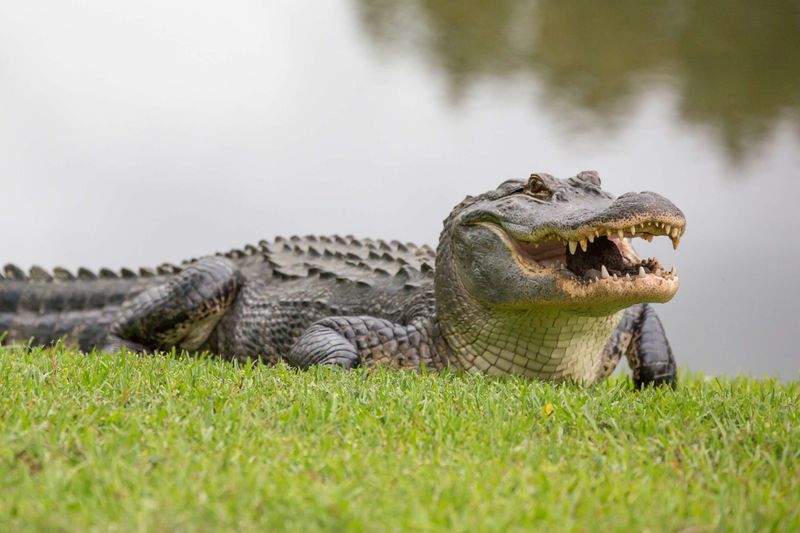
South Carolina’s marshy lowcountry provides ideal habitat for approximately 100,000 alligators. The state averages one fatality per decade but reports several non-fatal incidents annually, particularly around Hilton Head and Myrtle Beach tourist areas.
Golf courses present unique dangers as water hazards often house alligators while golfers focus on their game rather than watching for reptiles.
Many attacks involve people attempting to rescue pets that ventured too close to water’s edge. Climate change appears to be extending alligator range northward in South Carolina, with sightings now common in areas that rarely saw gators twenty years ago.
6. Alabama: Mobile Delta’s Scaly Inhabitants
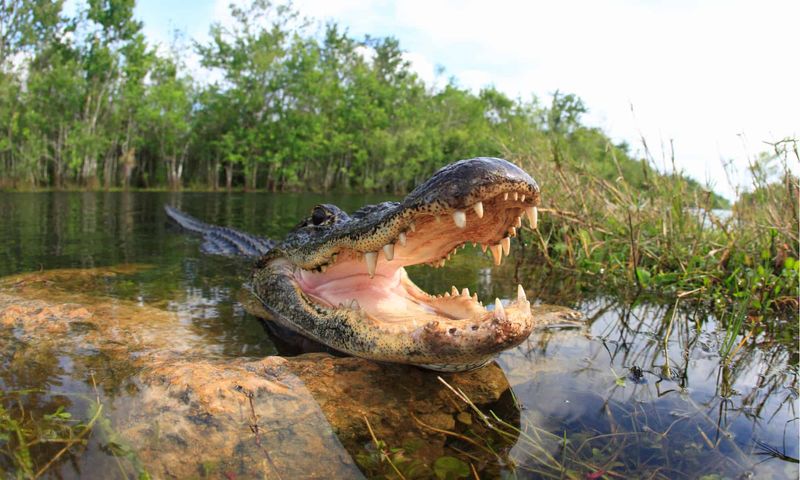
Alabama’s Mobile-Tensaw Delta represents the state’s alligator epicenter, a 260,000-acre wetland maze teeming with wildlife. Though attacks remain relatively rare, Alabama consistently ranks sixth nationwide for alligator incidents.
The state’s expanding alligator hunting program helps manage growing populations, estimated at over 70,000 statewide. Most Alabama attacks occur during summer months when people swim in freshwater lakes and rivers despite posted warnings.
A notable pattern in Alabama involves incidents at dusk and dawn – prime feeding times when alligators naturally become more aggressive and humans have difficulty spotting them in low light conditions.
7. Mississippi: Delta Danger Zones
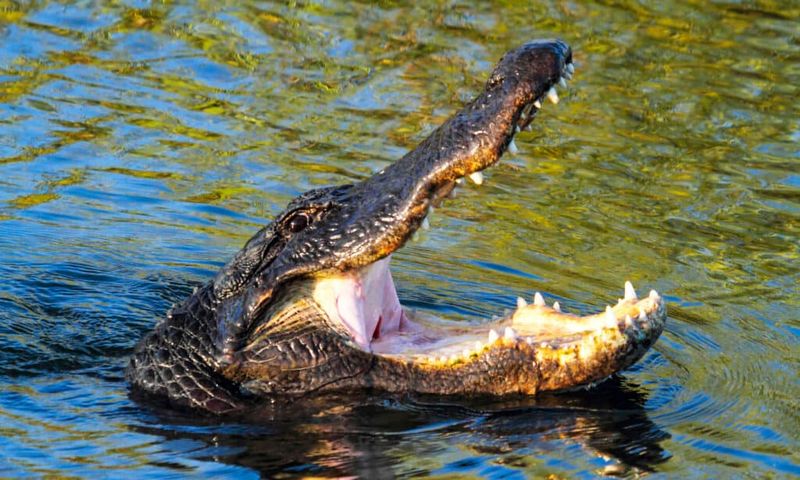
Mississippi’s share of alligator attacks concentrates in its southern counties and along the Mississippi River Delta. The state’s approximately 32,000 alligators primarily inhabit brackish marshes and river systems.
Commercial fishing activities account for many Mississippi encounters as trappers and fishermen work in remote areas where large alligators have little human contact.
Unusually, Mississippi records show several incidents involving alligators entering boats – a terrifying scenario for any angler!
Conservation efforts have successfully restored alligator populations from historical hunting pressure, creating new challenges for communities that had grown accustomed to their absence.
8. North Carolina: The Northern Frontier

North Carolina marks the northern extent of alligator territory along the Atlantic coast, with populations concentrated in the southeastern corner of the state. Lake Waccamaw and the Green Swamp preserve harbor significant numbers.
While attacks remain infrequent, North Carolina’s expanding human population pushes development into previously isolated wetlands. Climate warming appears to be helping alligators expand their range northward within the state, creating new risk zones.
A curious pattern in North Carolina involves “surprise encounters” – when people encounter alligators in areas they wouldn’t expect, like drainage ditches beside shopping centers or under parked cars during rainy weather.
9. Arkansas: Surprising Southwestern Encounters

Arkansas represents an outlier on this list – while not known for large alligator populations, the state reports enough incidents to rank ninth nationally. Southwestern Arkansas, particularly around the Red and Ouachita Rivers, harbors most of the state’s estimated 2,000 alligators.
Many Arkansas attacks involve cases of mistaken identity when people swimming in murky waters accidentally come too close to submerged gators. The state’s wildlife management program actively relocates “problem alligators” from populated areas.
Historical records suggest Arkansas once had more extensive alligator populations before hunting and habitat loss reduced their numbers in the early 20th century.
10. Oklahoma: Unexpected Southwestern Gator Territory
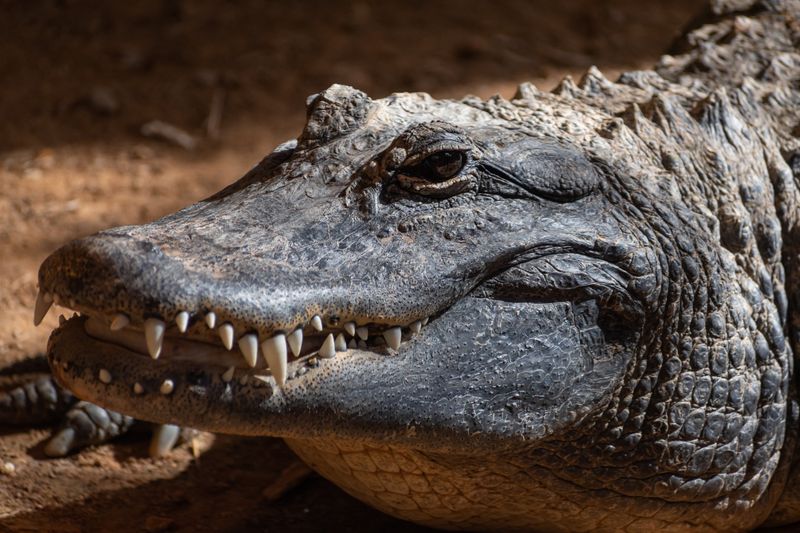
Surprised to see Oklahoma on this list? The southeastern corner of the state maintains a small but established alligator population, primarily in the Red River basin and McCurtain County wetlands.
While attacks remain extremely rare, they do occasionally occur. Most Oklahoma incidents involve people who don’t realize alligators exist in the state at all.
These populations represent the northwestern limit of American alligator range, with individuals typically smaller than their southern counterparts due to colder winters.
Wildlife officials believe some Oklahoma alligators may actually be released pets that established breeding populations in suitable habitat.
11. Tennessee: Rare But Not Impossible
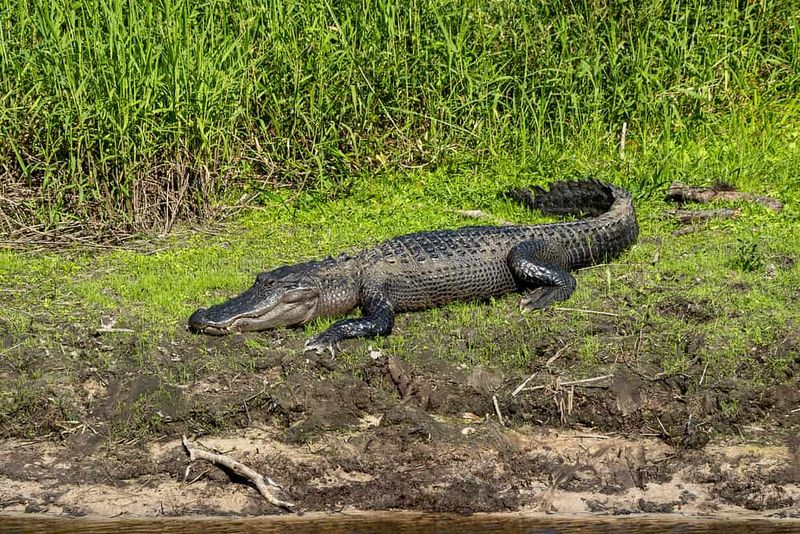
Tennessee technically shouldn’t have alligators – the state lies beyond their natural range – yet occasional attacks and sightings occur in its southwestern corner.
Wildlife officials believe these represent released pets or individuals that moved upriver from Mississippi during flood events.
Reelfoot Lake, formed during the New Madrid earthquakes of 1811-1812, provides suitable habitat for these unexpected residents.
Most Tennessee incidents involve fishermen in remote areas who accidentally hook alligators or encounter them while wading.
Climate change models predict Tennessee could become more hospitable to alligator populations in coming decades, potentially increasing risk in areas previously considered safe.
12. Virginia: The Extreme Northern Exception
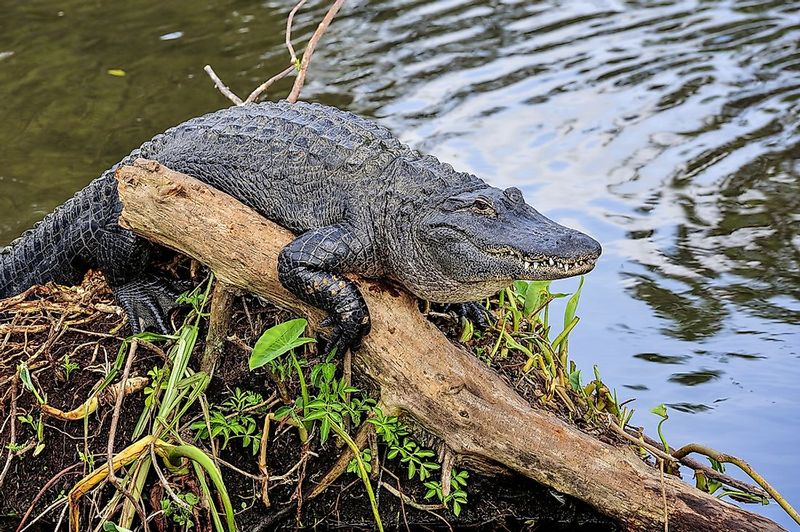
Virginia rounds out our list with the fewest documented attacks, but their occurrence at all is remarkable given the state’s northern location. The Great Dismal Swamp along the North Carolina border hosts a tiny population of alligators at the absolute northern limit of their range.
Most Virginia incidents involve misidentification, when large snapping turtles are mistaken for small alligators.
However, confirmed sightings and occasional conflicts do occur, particularly during unusually warm years. Wildlife biologists monitor these northern populations carefully, as they may provide valuable data on how alligators adapt to changing climate conditions and potentially expand their range northward.





